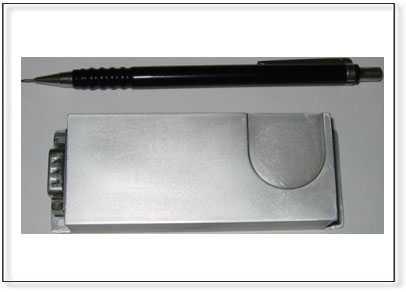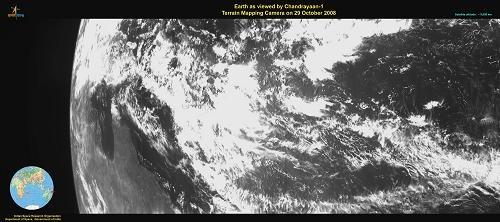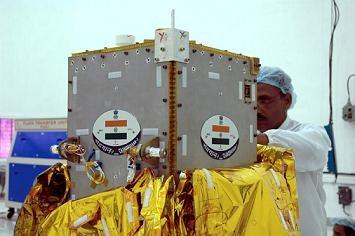Science Objectives
RADOM will qualitatively and quantitatively characterize, in terms of particle flux, dose rate and deposited energy spectrum, the radiation environment in near moon space.
The specific objectives are
- Measure the particle flux, deposited energy spectrum, accumulated absorbed dose rates in Lunar orbit;
- Provide an estimate of the dose map around Moon at different altitudes and latitudes;
- Evaluate the shielding characteristics (if any) of the Moon near environment towards galactic and solar cosmic radiation and solar particle events
- Study the radiation hazards during the Moon exploration through the CHANDRAYAAN ? 1 mission. Data obtained will be used for the evaluation of radiation environment and radiation shielding requirements on future manned Moon missions.
The dominant radiation components outside the earth?s magnetosphere are the Galactic cosmic rays (GCR) modulated by the magnetic fields associated with the low energy charged particles (the solar wind) which are continuously emitted from the Sun and the solar energetic particle events (SPE) emitte d during solar flares, sudden sporadic eruptions of the chromosphere of the Sun.
Radiation exposure of crewmembers on future manned space flight had been recognised as an important factor in the planning and design of such missions. Indeed, the effects of ionising radiation on crew health, performance and life expectancy are a limitation to the duration of man?s sojourn in space.
The general purpose of the present proposition is to study the radiation hazards during the Moon exploration through the Chandrayaan-1 mission. Data obtained will be used for the evaluation of radiation environment and radiation shielding requirements on future manned Moon mission.
Payload Configuration Details
RADOM is a miniature spectrometer-dosimeter containing one semiconductor detector of 0.3mm thickness, one charge-sensitive preamplifier and two micro controllers. The detector weighs 0.1398gm. Pulse analysis technique is used for obtaining the deposited energy spectrum, which is further converted to the deposited dose and flux in the silicon detector. The exposure time for one spectrum is fixed at 30 sec. The RADOM spectrometer would measure the spectrum of the deposited energy from primary and secondary particles in 256 channels onboard Chandrayaan-1.
RADOM Payload is from Bulgarian Academy of Sciences.
Links for additional information :
http://www.stilrad.stil.bas.bg
http://www.irsn.org
http://www.iss.it



